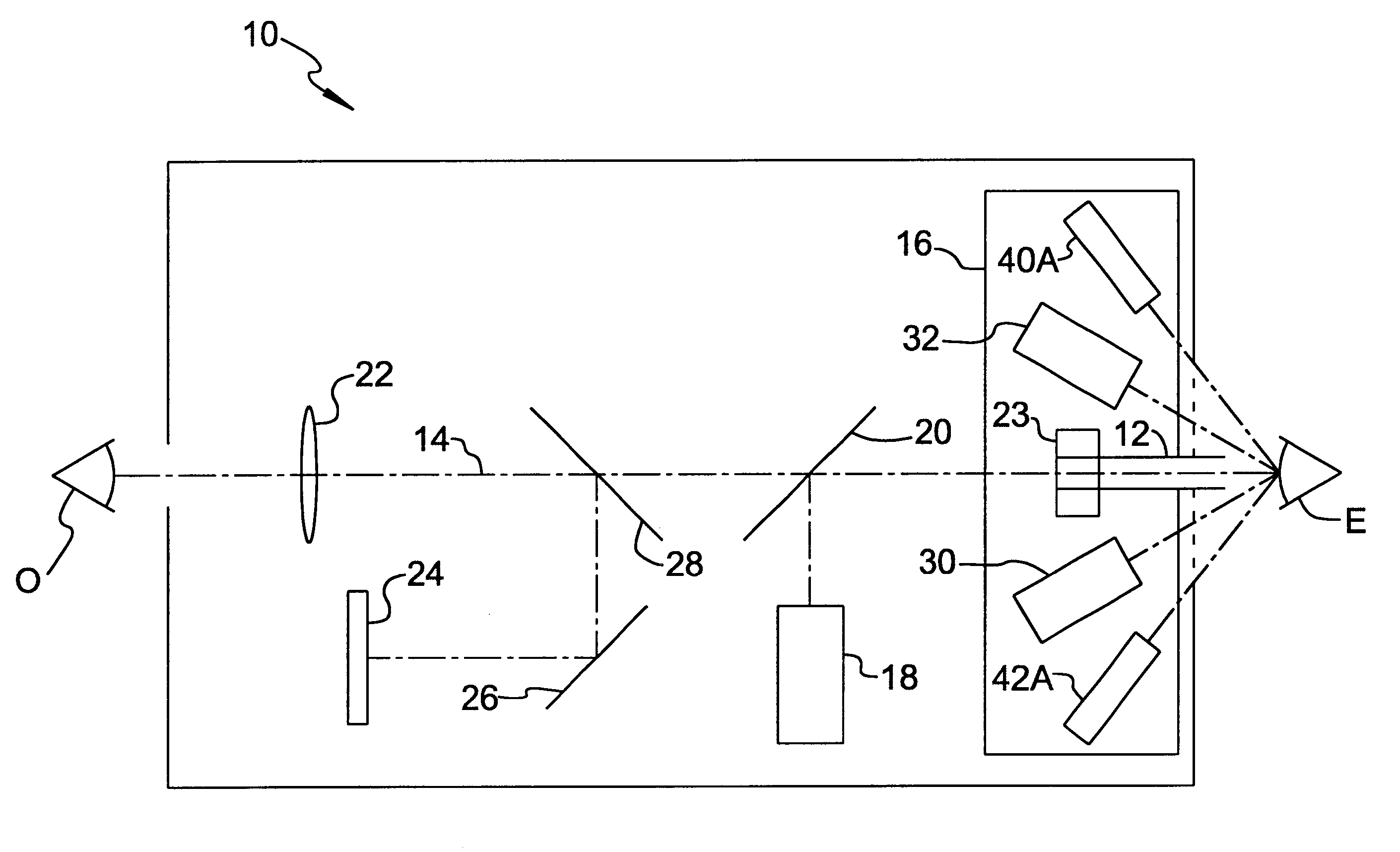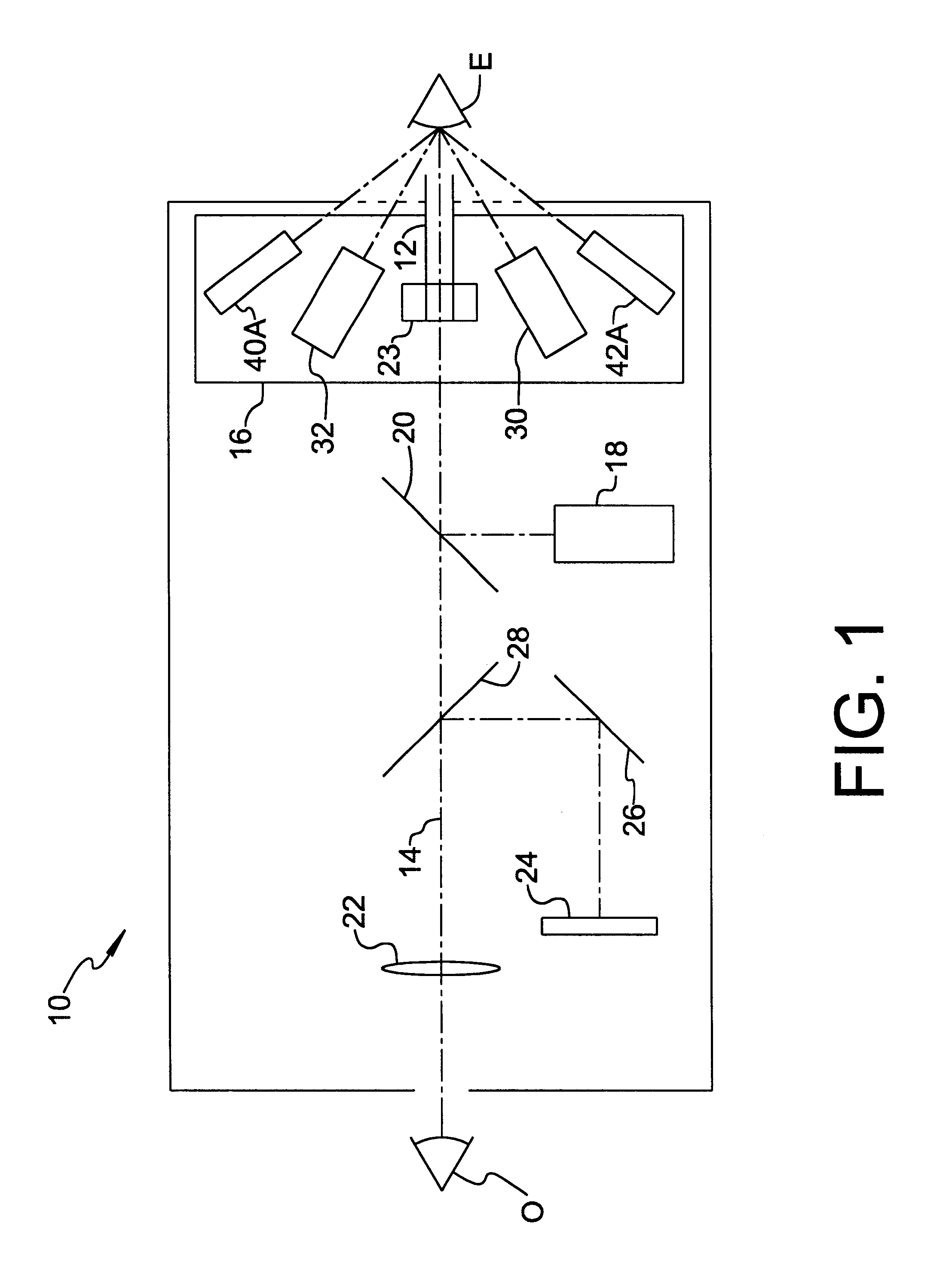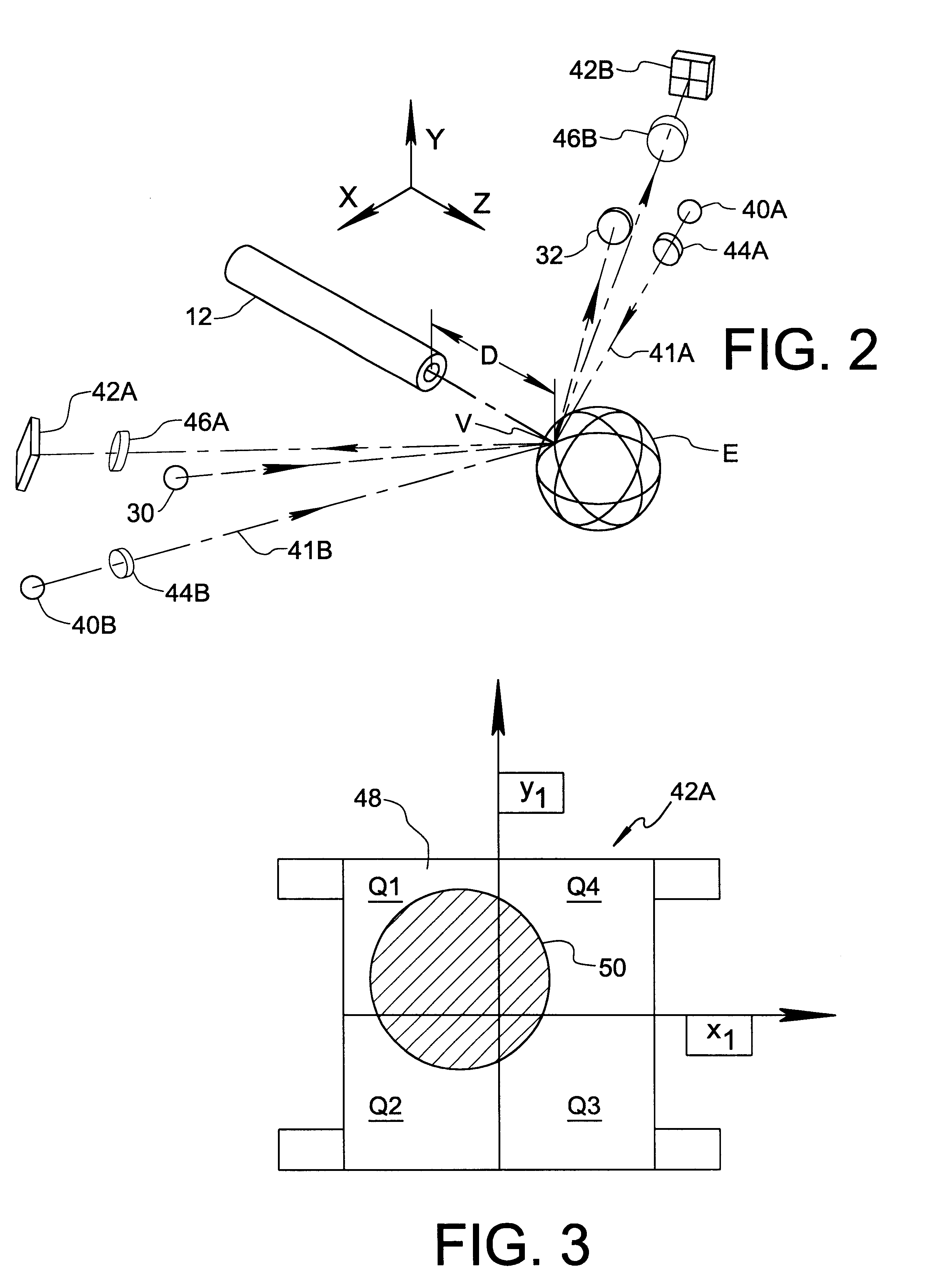Afocal position detection system and ophthalmic instrument employing said system
a technology of optical position detection and ophthalmology, which is applied in the field of optical position detection system and ophthalmology instrument employing said system, can solve the problems of system too slow for use in smaller hand-held ophthalmology instruments, system of u.s. patent no. 4,881,807 and other prior art systems like it are expensive to manufactur
- Summary
- Abstract
- Description
- Claims
- Application Information
AI Technical Summary
Benefits of technology
Problems solved by technology
Method used
Image
Examples
Embodiment Construction
FIG. 1, an ophthalmic instrument incorporating a position detection system of the present invention is illustrated schematically and identified by the reference numeral 10. Instrument 10 is depicted as being a non-contact tonometer operable to discharge a fluid pulse through a fluid discharge tube 12 to cause observable deformation of a patent's cornea for purposes of measuring intraocular pressure. However, the present invention may be implemented in other types of ophthalmic instruments where it is necessary to ascertain the X-Y-Z alignment status of the instrument relative to an eye.
Instrument 10 includes an optical axis 14 along which discharge tube 12 is aligned, a nosepiece 16 fixed near a front portion of the instrument for mounting various optical and opto-electronic elements of the instrument as described below, a fixation target projecting system 18 cooperating with a beamsplitter 20 to present a visible fixation target to the patient along optical axis 14, an eyepiece 22 ...
PUM
 Login to view more
Login to view more Abstract
Description
Claims
Application Information
 Login to view more
Login to view more - R&D Engineer
- R&D Manager
- IP Professional
- Industry Leading Data Capabilities
- Powerful AI technology
- Patent DNA Extraction
Browse by: Latest US Patents, China's latest patents, Technical Efficacy Thesaurus, Application Domain, Technology Topic.
© 2024 PatSnap. All rights reserved.Legal|Privacy policy|Modern Slavery Act Transparency Statement|Sitemap



